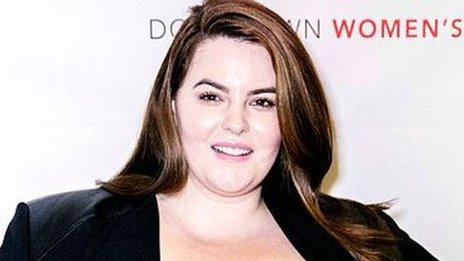'This is what plus-sized women have needed'
- Published

US plus-sized model Tess Holliday is the star of Cosmopolitan's latest issue.
The cover has been praised as a win for body positivity - with people sharing the importance of seeing a "visibly fat woman" on the front of a fashion mag.
Tess, who's a UK size 26, says she cried when asked to be on the cover.
"A magazine like that has never put someone like me, an actual fat body, on the cover of a magazine," she told BBC's Victoria Derbyshire.
"To be on a glossy where you can actually see my body, they haven't altered how I look, makes me really, really proud.
"It not only meant a lot to me, but the work that I'm doing, which would therefore impact millions of bodies that look like mine."
Plus-sized model 'cried when asked to be cover model'
The 33-year-old also wrote on Instagram: "If I saw a body like mine on this magazine when I was a young girl, it would have changed my life."
Many people have praised the cover on Twitter.
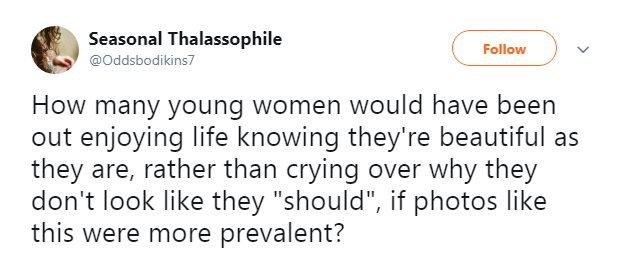
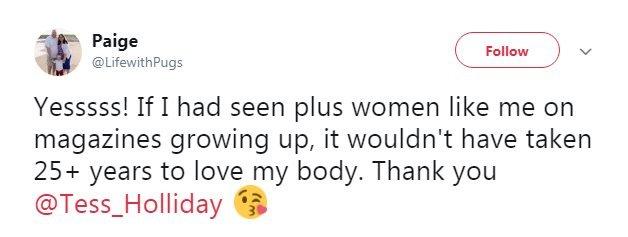

However, there's some that argue it's encouraging "unhealthy bodies".
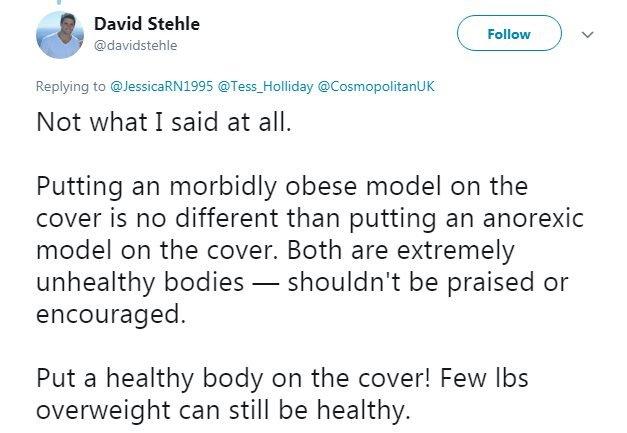
"Of course they're mad that I'm fat, but that's every day of my life," Tess said in response to the criticism.
"The reality is I've never once told my followers or anyone to gain weight.
"I'm saying that I love myself and because that happens to be coming from a fat body and a bigger body like mine, people then equate it saying 'I'm promoting obesity and that I'm unhealthy'.
"Even if it was what I do with my body it's no-one's business."
A true representation of plus-sized women?

The fact Tess is a size 26 can be seen as significant.
Some brands have been criticised recently by fashion bloggers who claim "plus-sized women are being erased from the very movement they created".
In an Instagram post, external, fashion influencer Sophie Tassew said a lot of the women used for plus-sized campaigns simply had "flat stomachs and big butts".
It's something blogger Stephanie Yeboah also claims is an issue.
She says she's noticed over the past few years that "the only models brands seem to use to promote plus-sized clothing are women who are between size 12 and 16, who often have a flat tummy, with big boobs and big bums".
"They want our money, yet they refuse to hire somebody that represents us," she told Newsbeat.
"It's not the case of this being the model's fault - the fault lies with casting agents and what they consider to be plus-sized."
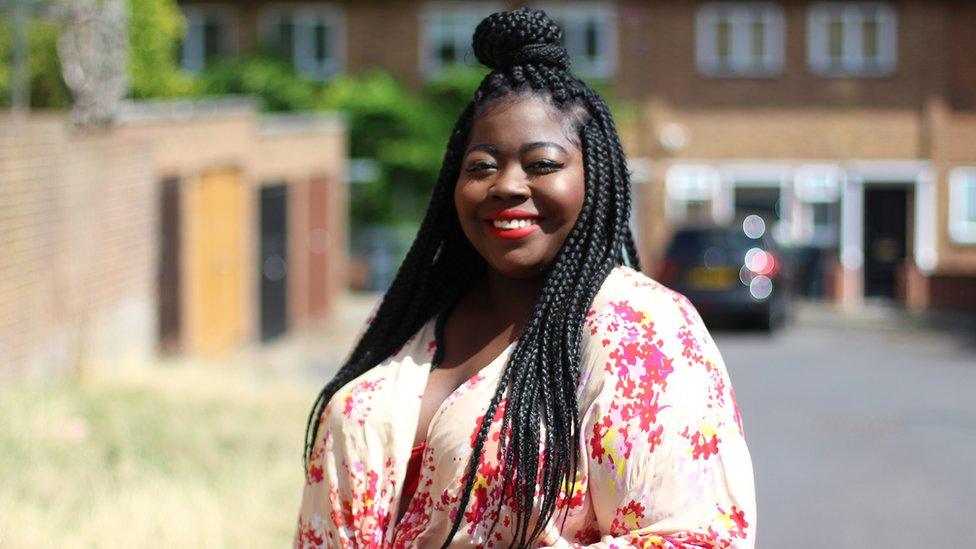
Stephanie says plus-sized fashion is excluding plus-sized women
In the last few years several brands have expanded their plus-sized range and have booked models such as Felicity Hayward.
"I am a plus-sized model, I have a big bum and big boobs but I also have a belly and big hips," she said.
She's worked on campaigns for brands such as Missguided, Make Your Mark and L'Oreal Elvive.
"Women come in all different shapes and sizes and they should be represented," she added.
"There are issues in the industry where brands will use a size 14 girl and then they put padding on her - that is something I have a problem with.
"You should be using real bodies and not bodies that have been padded with fabric to create an unrealistic body ideal."
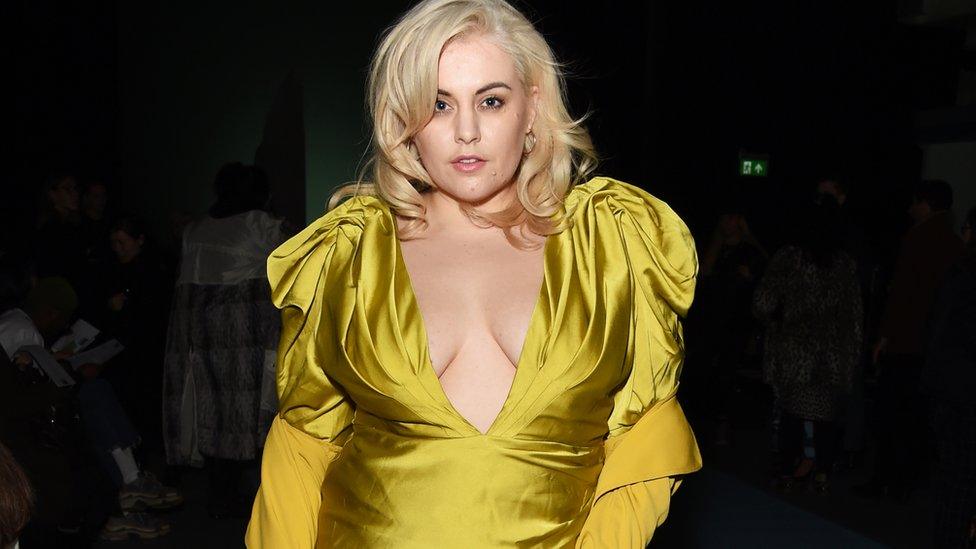
Felicity thinks that there needs to be more support for all body shapes
Felicity says there are brands that do use plus-sized models without airbrushing them.
"My belly is shown in campaigns and I have done a lot of campaigns that are unedited."
Now that a model of Tess' body type has graced the cover of a major fashion magazine, Stephanie hopes others will follow suit.
"I think it's an amazing feat that for the very first time, we see a plus-sized woman grace the cover of a mainstream magazine in a full frame photo wearing a form-fitting outfit," she says.
"It's definitely something that plus-sized women have needed for the longest time and marks the first step in what I hope to be a more diverse casting in regards to body shapes and ethnicities.
"Hopefully other magazines take notice and begin to react accordingly."
Follow Newsbeat on Instagram, external, Facebook, external and Twitter, external.
Listen to Newsbeat live at 12:45 and 17:45 every weekday on BBC Radio 1 and 1Xtra - if you miss us you can listen back here.
- Published4 May 2018

- Published3 June 2017
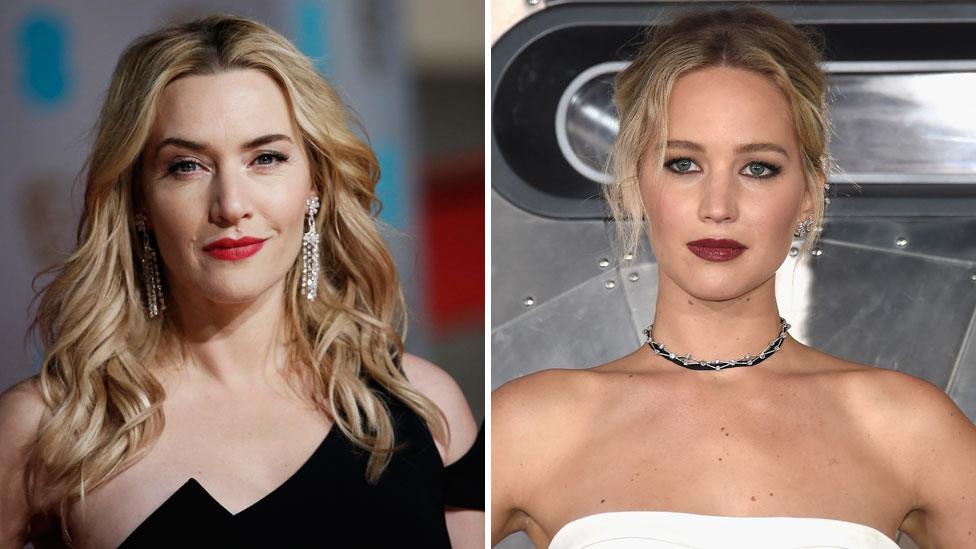
- Published23 May 2016
